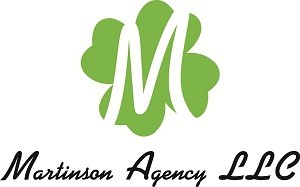Supporting Your Local Businesses
January 9th, 2017 — Martinson Agency LLC — Chaska, MN
Small businesses are among the most important components of the American economy, both on local and national levels.
Consider the following statistics from the U.S. Small Business Administration, an entity devoted to supporting entrepreneurs:
- Small businesses outnumbered large ones by a margin of 28.8 million to 18,600 in 2013.
- More than 99 percent of all companies that have employees in the U.S. are small businesses.
- Small businesses are responsible for more than half of the total export value.
- Between 1992 and 2013, small businesses created 63.3 percent of net new jobs.
With this in mind, let’s take a look at why you should consider shopping at your local retailers.
Support The Local Economy
While entrepreneurs have a massive impact on the national level, their greatest value is often found in the local areas they reside. For example, if you were to shop at a major, multi-national chain, much of their profits will go back to shareholders in other states. On the other hand, small business revenues and profits will often be funneled back into their local economies via the salaries of employees from the area, vendor relationships within the community and more. PV Local First, a nonprofit advocacy group supporting independent businesses, states that local companies are more likely to purchase and sell goods from other entities in their areas.
Higher Quality
Small businesses are also rarely involved in mass-production activities, especially when talking about local retailers. This means that you will be able to purchase more artisanal, higher-quality goods in many situations. If the small local business is a re-seller, then you will be supporting artisans, craft makers, cooks and other professionals in your area as well.
Indirect Philanthropy
When you shop local, the philanthropic and charitable groups in your area are more likely to thrive. Sustainable Connections, a nonprofit that focuses on green initiatives, states that small businesses donate 250 percent more to nonprofit organizations than larger, national chains. These funds, which you will be fueling when shopping local, can go a long way toward making tangible differences in the lives of your neighbors.
Be A Part Of The Movement
American Express, the credit card company that started Small Business Saturday, estimates that $14.3 billion was spent in 2014, and 95 million Americans shopped local during 2015’s iteration of the event. Do not miss your chance to show your support for your community’s companies and entrepreneurs!
If you are looking to make an insurance purchase please contact Martinson Agency in Chaska, MN and remember, SHOP SMALL!
Don’t leave your insurance to luck! Call today us today!
Phone: (952) 314-4400
Email: jphagen@aibme.com

 Contact
Contact Email an Agent
Email an Agent

 Click to Call
Click to Call Get Directions
Get Directions


